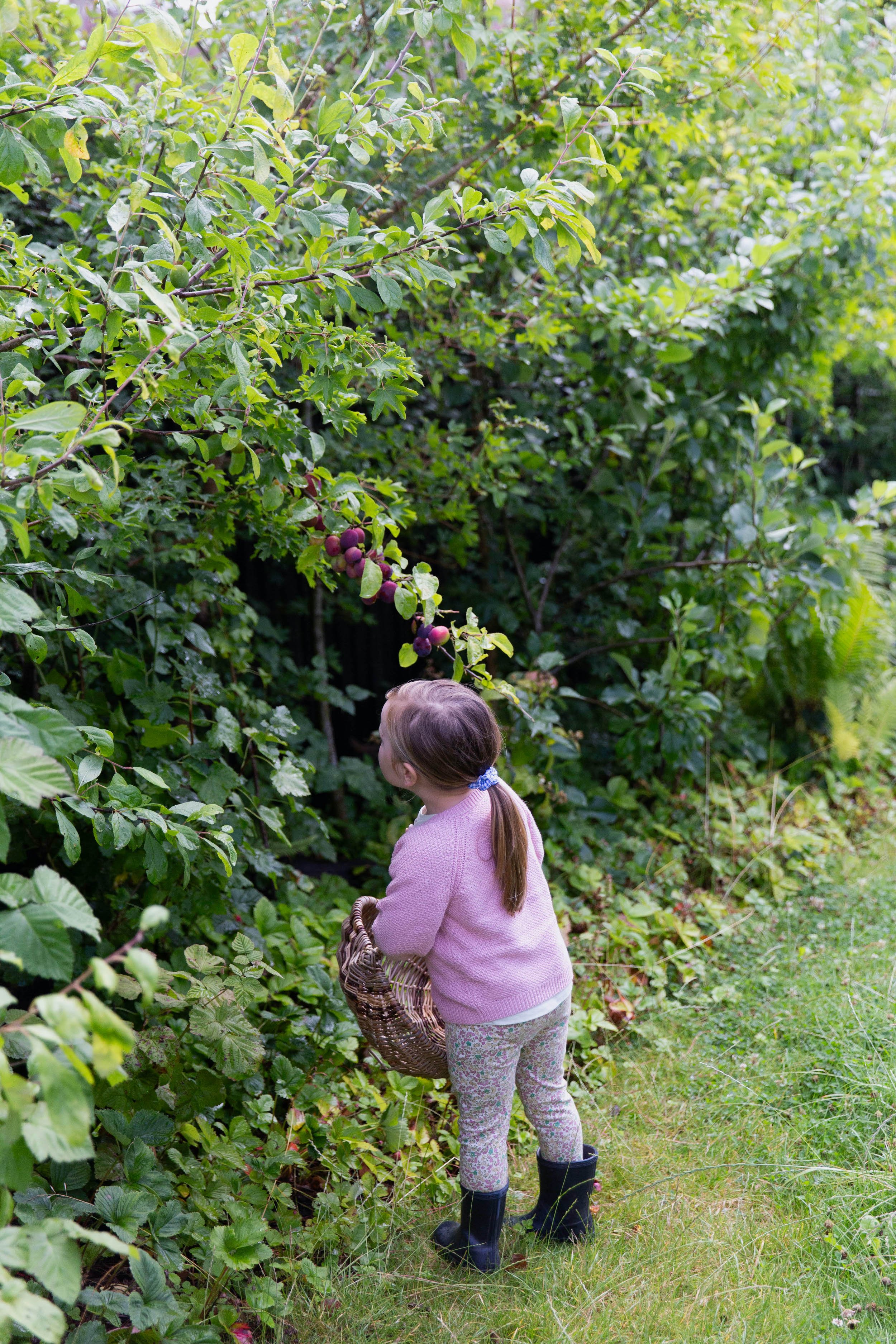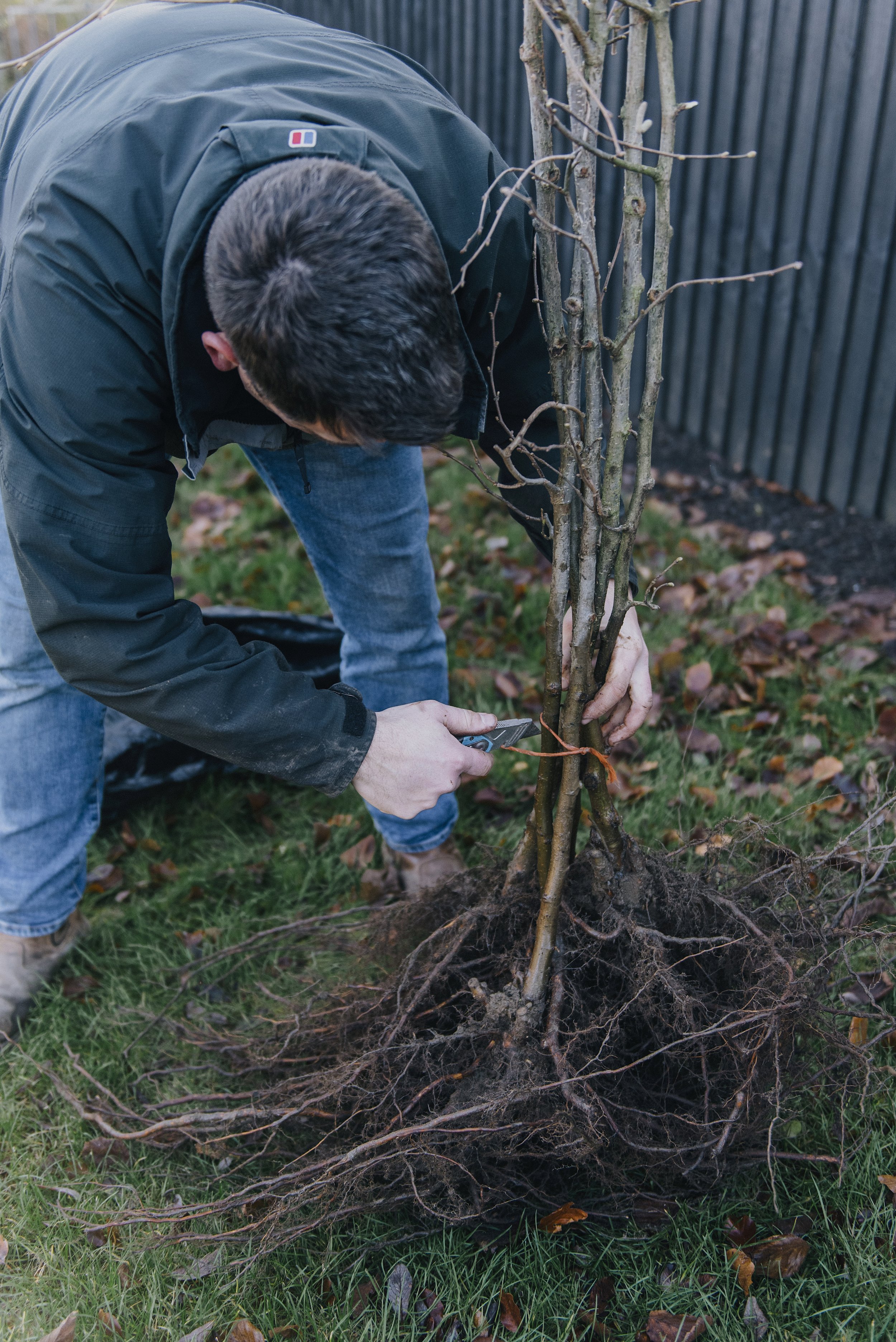Plant guide: plum trees
Plums are a relatively easy-going fruit tree, growing happily without too much attention and reliably producing crops of delicious soft fruit in the Summer, after froths of blossom in the Spring.
Many plums are self-fertile, meaning that you can have just one tree in the garden and they will still produce a crop of fruit (unlike most apples, for example, which need another tree for pollination.) This can make them the perfect fruit tree for smaller spaces, as you can fit just one tree in…
Botanical name: Prunus domestica
Plant type: Deciduous fruit tree.
Growing conditions:
Plum trees need a sunny spot for the fruit to ripen well, and prefer warm, slightly sheltered locations. They can be grown alone, but also do well as part of a hedge, or against a sunny wall.
They prefer a fertile soil, that is moist but well-draining, and they won’t do well in a waterlogged spot, or anywhere in a frost pocket.
Plum trees come on different rootstocks, to restrict their growth. If you have a smaller space, choose a “dwarfing” rootstock, such as VVA-1, which grows into a smaller tree. See our guide to rootstocks for more information.
Grow with:
Plums can be grown as a standalone tree, for example in the middle of a lawn, or as a specimen tree in a border. We have plums growing in our garden as part of our edible hedge, where they add to our Autumn fruit harvest!
Uses:
As well as eating directly from the tree, plums are excellent in jams and jellies, and can be cooked in crumbles or pies…
How to plant:
Plant plum trees in the dormant season, from Autumn to late Winter. We always prefer to plant bare root trees, as they establish more quickly than container grown plants. There are also a huge range of different varieties available, giving a greater choice than just buying a tree in a container. Blackmoor is one of our favourite nurseries for fruit trees.
Plant any time that the soil isn’t water logged or frozen. Dig a hole to the depth of the roots, and a little wider, and position the tree in the spot, turning to ensure that is angled in the best way. Backfill the hole, and gently firm down, watering well. See our guide to planting bare root trees for more detailed information.
Harvesting:
Plums ripen in August to September, depending on the variety and the weather.
To tell if the fruit is ripe, gently squeeze the plum, and if it feels soft then it is ready to pick. Not all plums on the tree will ripen at exactly the same time, so trees usually need a few different pickings over.
To harvest, hold the fruit gently and twist it away from the stem.
Do take care about leaving plums on the tree to go over-ripe, as these can attract wasps, which makes future pickings slightly perilous! We pick our plums when they are just starting to ripen, and let them ripen inside in a bowl on a sunny windowsill.
Care:
As the trees mature and get larger, with well-established roots, they will need less watering, but it is important to check on them and water well in the first few years after planting. Water in any dry spells, and water consistently when the fruits are developing.
Plum trees don’t need a huge amount of pruning, as they will still fruit well even on slightly congested branches. The most important thing to remember is to only prune in the Spring months as winter pruning can make them susceptible to a disease called silver leaf.
In early Spring, prune out any dead, diseased or dying branches. Cut back any branches that are crossing or congested. And cut the ends of all branches back, removing about a half of the previous season’s growth. Cut back to just above a bud.
Though it’s not essential, plum trees respond very well to a feed. A feed in late Winter of a high potassium general fertiliser, scattered on the soil around the trees, will help them to produce a bountiful crop later in the year.
Mulch in early Spring to help to conserve moisture and suppress weeds.
Remove any weeds growing around the base of the tree, in order to prevent competition for water and nutrients.
Favourite varieties:
‘Victoria’ is a very well known plum variety, and one that we love to grow. It’s reliable and low-maintenance, with delicious purple-yellow fruits.
‘Czar’ is another reliable cultivar. It’s small-growing, so works well in smaller spaces, but produces heavy crops of plums, which are a glorious deep purple colour.






